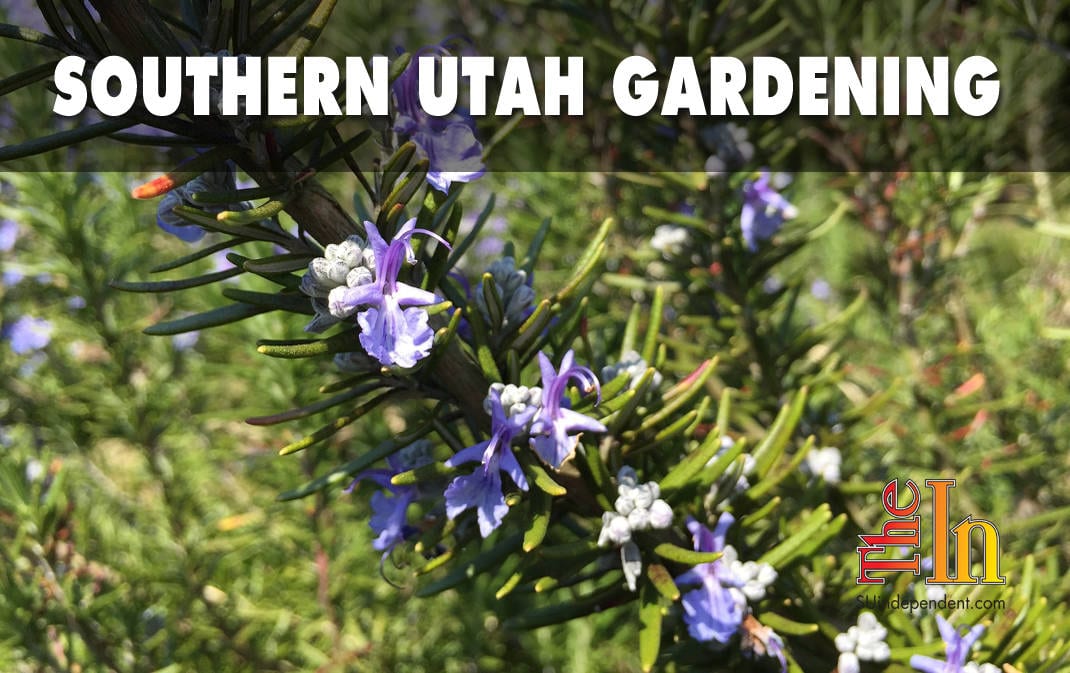
Rosemary has been around for a long time. Greeks and Romans grew and used it, and Shakespeare referred to it in a few of his plays. In addition to being used to remember those who have died, rosemary has been used throughout history to heal the sick, ward off thieves, add pungent flavor to culinary delights, and—more recently—to beautify our southern Utah gardens.
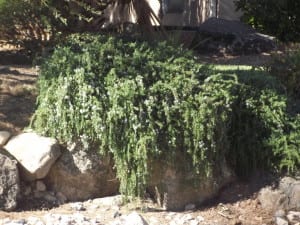 Rosemary loves a hot, sunny spot in your garden with well draining soil, but is tolerant of many soils as long as it is not over-watered. It will even tolerate a bit of shade, but doesn’t require it. There are two forms to consider: upright and trailing. Upright rosemary does just as well as trailing but is a shrub reaching six feet tall and two to four feet wide. It may be pruned into a hedge or any desired shape, such as a cone or sphere. Trailing rosemary is commonly seen in all over the St. George area. It only reaches two feet tall and eight feet wide, and will drape over ledges. Both types of rosemary flower in the spring and fall, and both are edible.
Rosemary loves a hot, sunny spot in your garden with well draining soil, but is tolerant of many soils as long as it is not over-watered. It will even tolerate a bit of shade, but doesn’t require it. There are two forms to consider: upright and trailing. Upright rosemary does just as well as trailing but is a shrub reaching six feet tall and two to four feet wide. It may be pruned into a hedge or any desired shape, such as a cone or sphere. Trailing rosemary is commonly seen in all over the St. George area. It only reaches two feet tall and eight feet wide, and will drape over ledges. Both types of rosemary flower in the spring and fall, and both are edible.
The name rosemary doesn’t have anything to do with roses or Mary but is derived from a Latin term meaning “dew of the sea.” It is native to hot, dry regions of the Mediterranean, so it does very well in southern Utah.
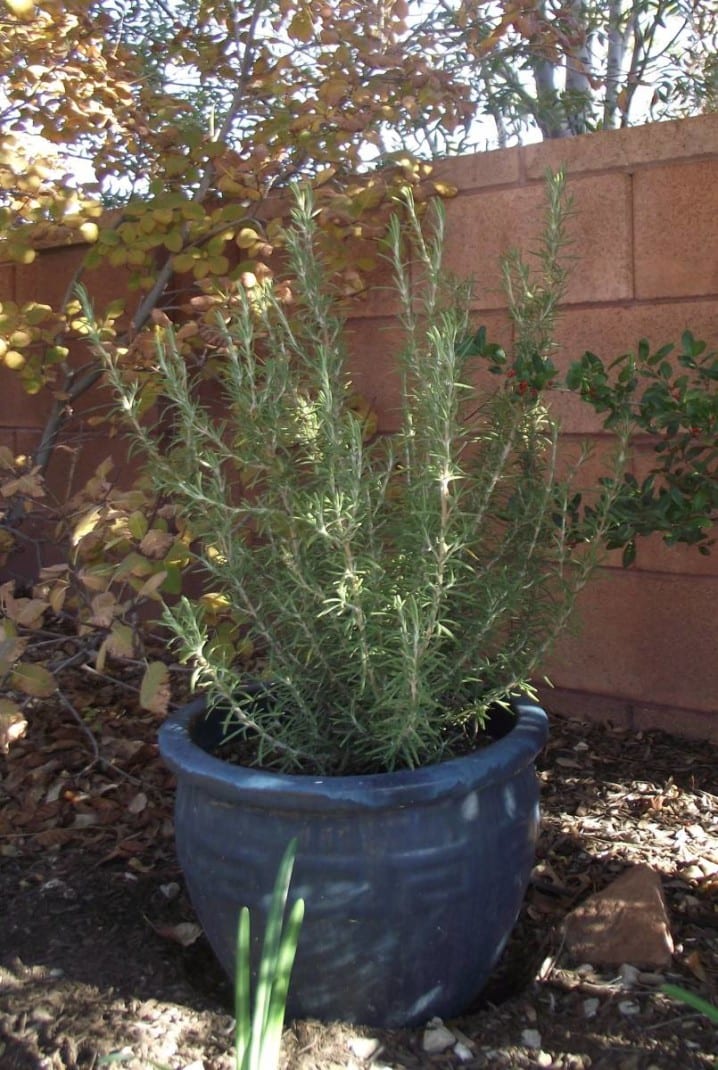 A caveat when planting rosemary: Consider how cold it will get during the winter in your area. Rosemary does not appreciate temperatures below 15 degrees. That being said, you can manipulate the location of rosemary in winter by planting it in a pot. If it is possible, move the pot to an eastern or southern exposure during the winter to keep it warm enough to be happy and stay alive. If it is simply too cold during the winter where you keep your rosemary, move it inside to a sunny location until temperatures are suitable again. If you are in lower elevations of Washington county—below 3,000 feet—you are most likely safe to plant rosemary in a pot or in the ground. However, it does get below 15 degrees on occasion during the winter even at these lower elevations. We southern Utahans shudder at the thought and try to block these occasions from our memory, but it has been known to happen—and when it does, rosemary may suffer. If the damage is minimal, trim the rosemary, removing the dead parts. If the damage is significant, just remove the dead rosemary and plant a new one in the spring. They grow rapidly, and even small, inexpensive plants will grow quickly enough to replace the old plant in just a couple of years.
A caveat when planting rosemary: Consider how cold it will get during the winter in your area. Rosemary does not appreciate temperatures below 15 degrees. That being said, you can manipulate the location of rosemary in winter by planting it in a pot. If it is possible, move the pot to an eastern or southern exposure during the winter to keep it warm enough to be happy and stay alive. If it is simply too cold during the winter where you keep your rosemary, move it inside to a sunny location until temperatures are suitable again. If you are in lower elevations of Washington county—below 3,000 feet—you are most likely safe to plant rosemary in a pot or in the ground. However, it does get below 15 degrees on occasion during the winter even at these lower elevations. We southern Utahans shudder at the thought and try to block these occasions from our memory, but it has been known to happen—and when it does, rosemary may suffer. If the damage is minimal, trim the rosemary, removing the dead parts. If the damage is significant, just remove the dead rosemary and plant a new one in the spring. They grow rapidly, and even small, inexpensive plants will grow quickly enough to replace the old plant in just a couple of years.
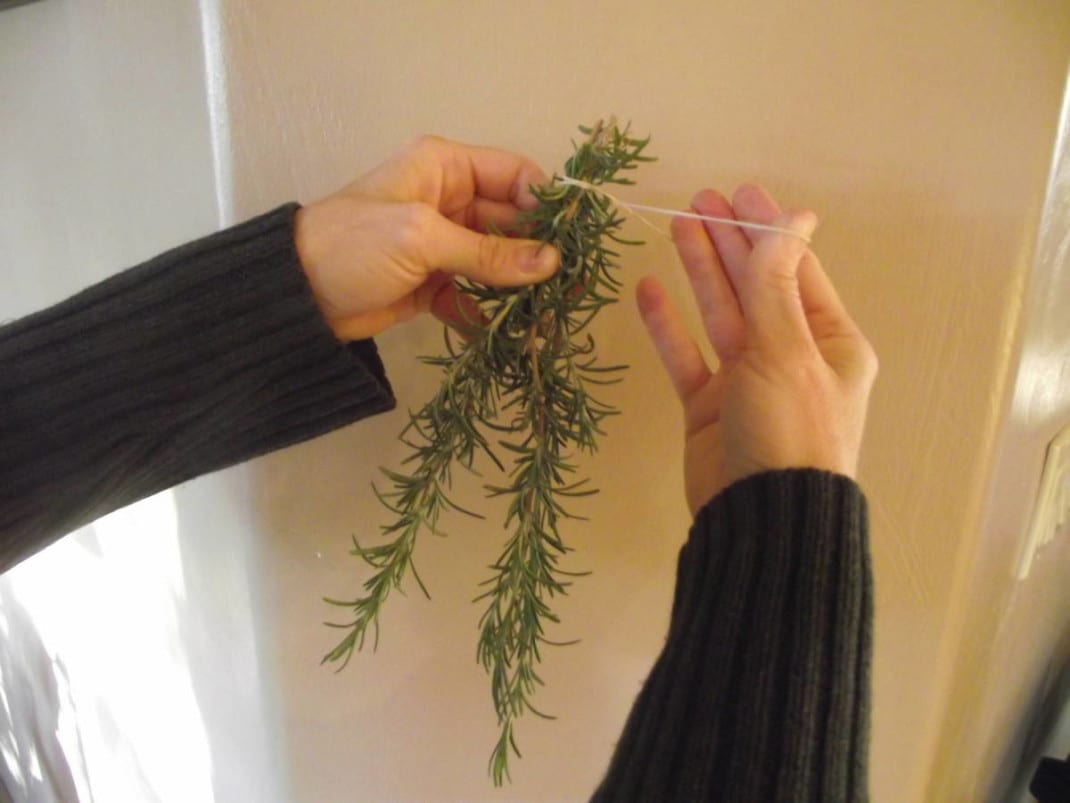 I mentioned earlier that both upright and trailing rosemary are edible. You may use the leaves fresh or dried. For fresh rosemary, clip off a stem, and strip the leaves from it. Then chop or mince according to your recipe. To dry rosemary, clip several stems and hold them together like a small bouquet. Use a rubber band to secure the bouquet together, then to a hanger. I like to hang my herb-drying hangers in a spare closet.
I mentioned earlier that both upright and trailing rosemary are edible. You may use the leaves fresh or dried. For fresh rosemary, clip off a stem, and strip the leaves from it. Then chop or mince according to your recipe. To dry rosemary, clip several stems and hold them together like a small bouquet. Use a rubber band to secure the bouquet together, then to a hanger. I like to hang my herb-drying hangers in a spare closet. 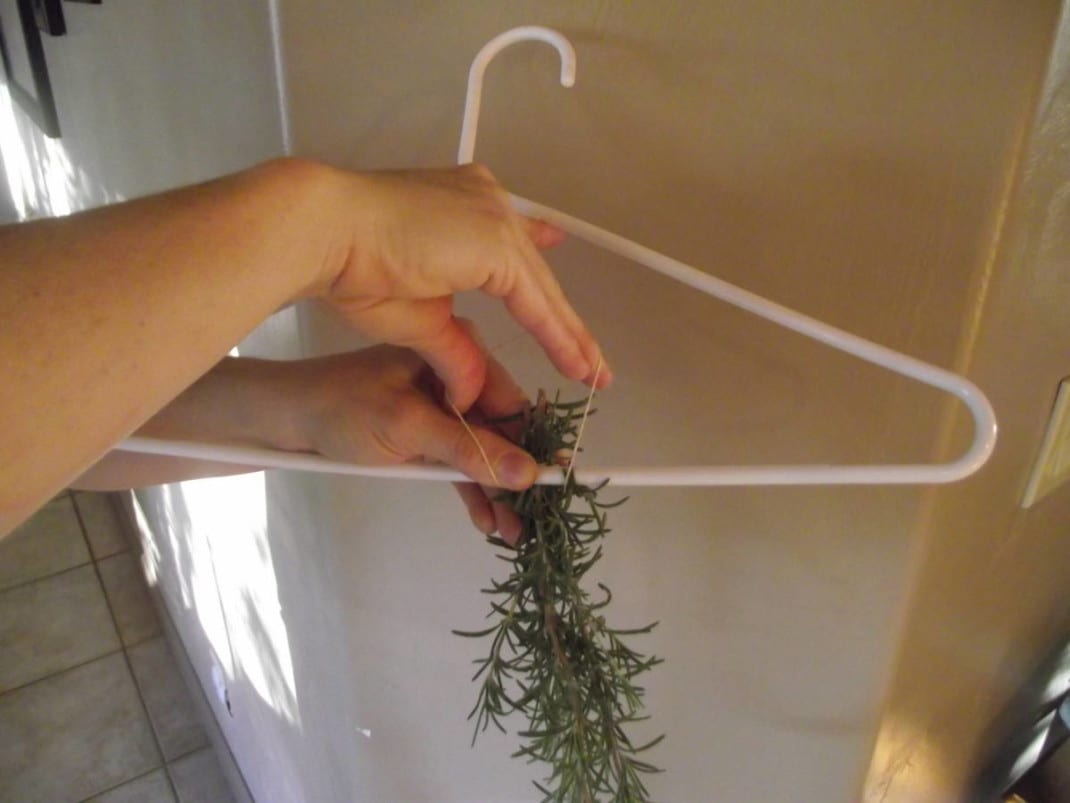 When the rosemary is completely dry, strip the leaves from the stem, and store them in an airtight container in a cool, dark place. When you need dried rosemary, you’ll have the freshest available.
When the rosemary is completely dry, strip the leaves from the stem, and store them in an airtight container in a cool, dark place. When you need dried rosemary, you’ll have the freshest available.
For an evergreen option, beautify your southern Utah garden with rosemary. Trim an upright version into a cone, and 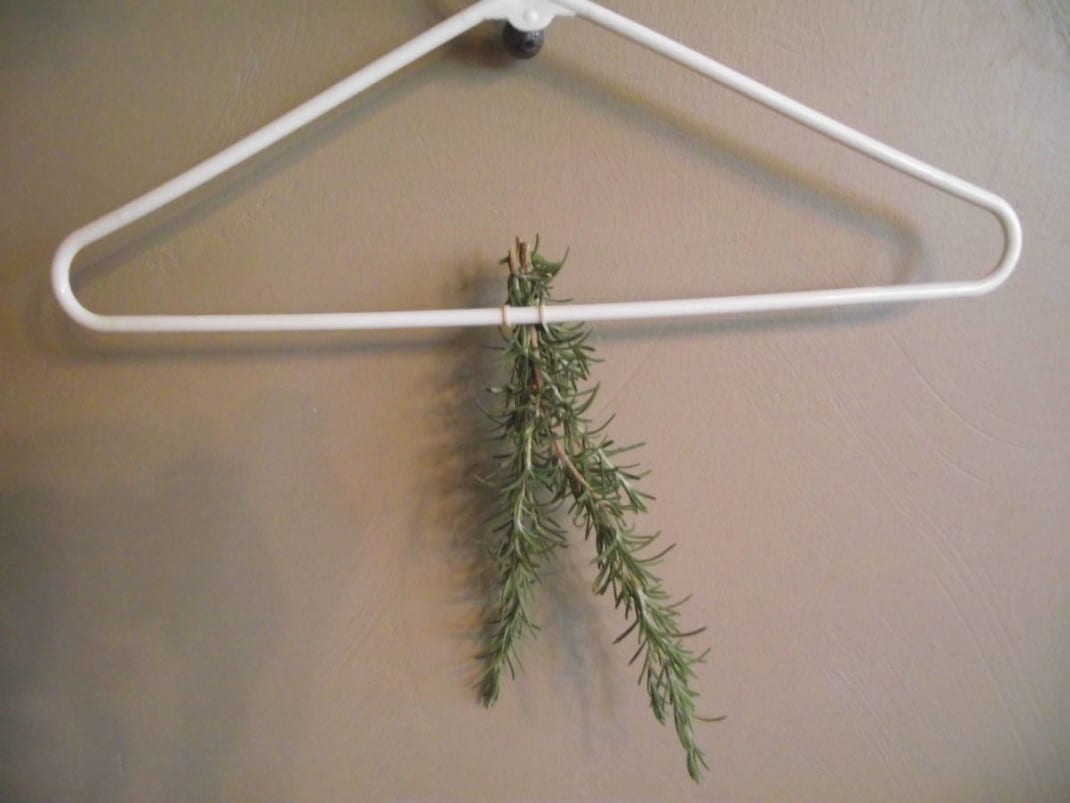 decorate it for Christmas. It can be inside or in a pot on your front porch. Does that sound cute, or does that sound cute? I think I will do that! I’ll just trim the rosemary in my pot to resemble a conifer and then decorate it. I can also dry the rosemary clippings for a fresh addition to my pantry. Get outside, winter is for gardening!
decorate it for Christmas. It can be inside or in a pot on your front porch. Does that sound cute, or does that sound cute? I think I will do that! I’ll just trim the rosemary in my pot to resemble a conifer and then decorate it. I can also dry the rosemary clippings for a fresh addition to my pantry. Get outside, winter is for gardening!




A Rosemary Christmas tree does sounds Cute, and it would smell so good!